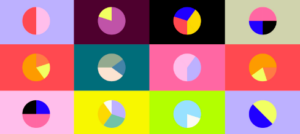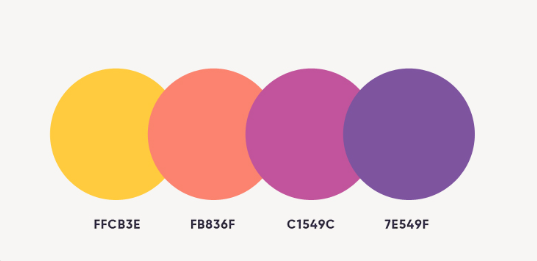Color is one of the most powerful tools in a designer’s arsenal. It has the ability to evoke emotions, convey messages, and create visual harmony. Choosing the right color palette is a crucial step in any design project, whether it’s a website, a logo, a poster, or any other creative endeavor. In this article, we will explore the fascinating world of color palettes for designers and provide insights on how to use them effectively.
What is a Color Palette?
A color palette is a set of carefully selected colors that work together to create a visually appealing and harmonious design. These colors can be used for various design elements, such as backgrounds, text, graphics, and accents. The goal of a color palette is to ensure that the colors complement each other and convey the desired message.
Types of Color Palettes
Designers use different types of color palettes to achieve different effects. Here are some common types:
Monochromatic
A monochromatic color palette consists of different shades and tones of a single color. This creates a clean and elegant look, making it easy to establish a cohesive and unified design.
Analogous
Analogous color palettes consist of colors that are adjacent to each other on the color wheel. This choice creates a harmonious and subtle appearance with a gentle transition between colors.
Complementary
Complementary colors are opposite each other on the color wheel. This type of palette creates strong contrast and is often used for high-impact designs.
Triadic
A triadic color palette uses three colors evenly spaced around the color wheel, resulting in a vibrant and balanced design with a lot of visual interest.
Tetradic (Double Complementary)
This palette utilizes four colors, often two pairs of complementary colors. It allows for diverse design options, but balance is essential to prevent the design from becoming overwhelming.

Choosing the Right Color Palette
Selecting the perfect color palette for your project can be challenging. Here are some steps to help you make the right choice:
Define Your PurposeStart by understanding the purpose and message of your design. Are you trying to convey professionalism, playfulness, or something else? Your palette should align with this purpose.
Consider Your Audience
Different colors evoke different emotions and associations in various cultures and age groups. Thus, research your target audience’s preferences and cultural context.
Start with Base Colors
Choose one or two base colors that will serve as the foundation for your design. To add on, these are the dominant colors that set the tone.
Add Supporting Colors
Complement your base colors with supporting colors. Moreover, these should enhance the main colors and add variety to your design.
Test and Iterate
Don’t be afraid to experiment with different color combinations. In addition, create prototypes or mock-ups to see how your palette works in a practical application.
Tools for Creating Color Palettes
Several tools are available to help designers create and manage color palettes. Some popular ones include:
Adobe Color Wheel
This online tool lets you experiment with different color harmonies and provides color codes for easy integration into design software.
Coolors
Additionally, coolors is a user-friendly color scheme generator that allows you to explore and adjust color palettes quickly.
Pantone
Moreover, Pantone offers a comprehensive color matching system that is widely used in the design and printing industry.
Color Hunt
Furthermore, color Hunt is a platform where designers can discover and share handpicked color palettes.
Design Software
Many design software options, such as Adobe Illustrator and Photoshop, have built-in color palette creation tools and libraries.
Conclusion
In conclusion, color palettes are a fundamental aspect of design that can significantly impact the overall look and feel of your projects. Therefore, by understanding the different types of color palettes, considering your purpose and audience, and using the right tools, you can create captivating and harmonious designs that leave a lasting impression. So, embrace the world of color and let your creativity shine with the perfect palette for your next design project.

